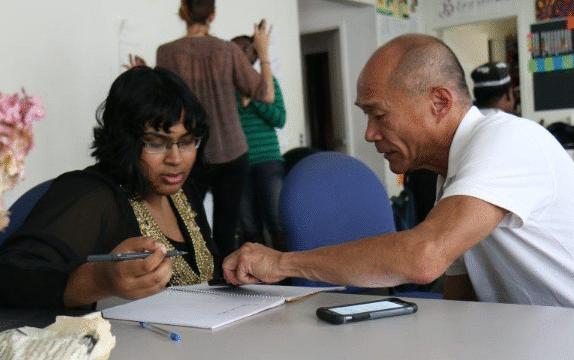Access to education is one of the most important building
blocks of a thriving society. While international organizations
and national governments often play major roles in shaping
broad education policies, it is local governments that often determine how those policies are carried out in practice. Communities rely on city councils, municipalities, districts, and provincial authorities to ensure that children and adults alike can enter classrooms, have qualified teachers, and access safe learning environments. Exploring the role of local governments in education access shows how powerful community-level action can be in opening doors for every learner.
Local governments often act as the bridge between broad policies and daily realities. When a national government sets a framework for universal primary education, for instance, it is the local authorities who make sure schools are actually built, teachers are hired, and resources are distributed fairly. Without that hands-on involvement, policies risk remaining words on paper rather than being lived experiences for families. Local leaders understand the unique needs of their neighborhoods, whether that means addressing overcrowded classrooms, ensuring safe transport to schools, or creating after-school programs for working parents. Their close connection to residents makes them especially well placed to design solutions that truly work.
One key area where local governments shape education access is in infrastructure. Schools do not appear out of nowhere; they are planned, funded, and maintained by governing bodies closest to the community. In many towns and cities, municipal councils oversee the construction of new classrooms when populations grow, or they renovate aging buildings to meet safety standards. Beyond physical buildings, infrastructure also includes basic necessities such as clean water, reliable electricity, and safe playgrounds. When local governments invest in these aspects, they remove barriers that often prevent children from attending school consistently.
Funding is another responsibility that falls heavily on local administrations. While national budgets may provide overarching support, local governments often make decisions about how funds are allocated within their jurisdictions. These choices affect whether schools can purchase new textbooks, whether teachers have adequate salaries, and whether there are programs in place to support learners with special needs. Transparent and fair funding models can help ensure that schools in less wealthy neighborhoods are not left behind. When communities see their local leaders investing directly in schools, it strengthens trust and shows that education is a shared priority.
Transportation is another dimension of access that local governments influence. In rural areas, children may live miles away from the nearest school, making daily attendance difficult. By providing school buses or maintaining safe roads, local authorities can dramatically reduce absenteeism. In urban centers, local governments may work with public transit systems to offer reduced fares or safe walking routes for students. These seemingly practical measures can have long-lasting effects on whether young people stay in school or drop out prematurely.
Beyond the basics of infrastructure and funding, local governments also create policies that shape inclusivity in education. For example, they may establish programs to support children who speak minority languages, ensuring that these students are not excluded due to language barriers. They might launch initiatives to improve accessibility for learners with disabilities by providing ramps, specialized learning materials, or trained support staff. These efforts send a clear message that education is not just for some children, but for every child regardless of background or ability.
Local authorities also play an important role in encouraging community engagement. Education works best when schools are not isolated but are instead closely connected to the families they serve. Local governments can create forums for parents, teachers, and community organizations to share their perspectives and collaborate on solutions. This might take the form of town hall meetings, school advisory councils, or public hearings where citizens can advocate for their children’s needs. By fostering dialogue, local governments build a sense of shared ownership over education, which often leads to stronger outcomes for learners.
Teacher support is another area where local governments make a difference. Recruiting and retaining qualified teachers is a universal challenge, and local policies can influence whether educators feel valued and supported. Initiatives such as housing assistance, professional development programs, or mentorship opportunities can encourage teachers to remain in the profession and to serve in communities where they are needed most. When teachers thrive, students benefit directly through improved instruction and more stable learning environments.
Technology has also opened new possibilities for local governments to expand education access. From providing free internet hotspots in underserved neighborhoods to equipping schools with digital devices, local leaders can help bridge the digital divide. During global disruptions like the recent pandemic, many municipalities found creative ways to keep learning going, such as distributing printed learning packets or setting up online tutoring programs. These experiences showed how adaptable and resourceful local governments can be when education is at stake.
Partnerships further enhance the ability of local governments to support education. By working with nonprofit organizations, universities, or businesses, local authorities can bring additional resources into schools. Such partnerships might fund scholarships, sponsor extracurricular activities, or provide career training programs that prepare students for the workforce. These collaborations often create opportunities that go beyond what a single level of government could provide on its own.
Of course, challenges remain. Local governments often face financial limitations, competing priorities, and political pressures. In some regions, disparities between wealthy and less affluent communities lead to unequal access to quality schools. Addressing these inequalities requires not only careful planning but also a commitment to fairness and inclusion. Transparency, community involvement, and innovative solutions can help overcome these obstacles.
Ultimately, the efforts of local governments highlight an important truth: education access is not just a national or global concern, but a deeply local one. When leaders at the community level invest in schools, prioritize inclusivity, and listen to families, they make education more accessible for all. Each classroom built, each teacher supported, and each child given safe passage to school represents a step toward a more equitable society.
The work of local governments in education access may not always make international headlines, but it is in these everyday decisions that the future of communities is shaped. By ensuring that every child has the chance to learn, local leaders not only strengthen their towns and cities but also contribute to a world where knowledge is shared more fairly. Education begins at home, but its promise is safeguarded in the hands of local governments that recognize its power to transform lives.






